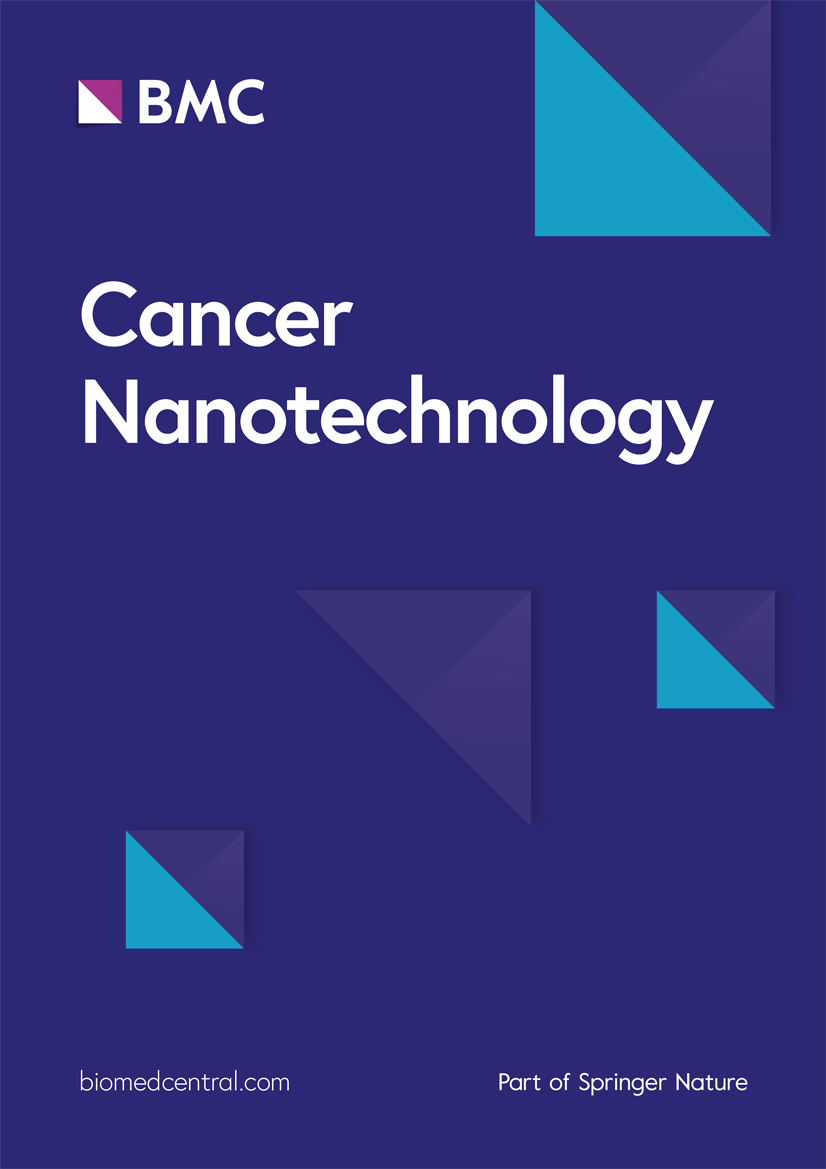Biocompatible PLGA-PCL nanobeads for efficient delivery of curcumin to lung cancer
IF 4.8
2区 工程技术
Q2 NANOSCIENCE & NANOTECHNOLOGY
引用次数: 0
Abstract
Lung cancer has been mentioned as the first and second most prevalent cancer among males and females worldwide, respectively since conventional approaches do not have enough efficiency in its suppression. Therefore, a biocompatible and efficient polylactic-co-glycolic acid (PLGA: P)- poly-ε-caprolactone (PCL: P) copolymer was fabricated for delivery of relatively insoluble curcumin (Cur) to A549 lung cancer cells. Next, the physicochemical aspects of the synthesized nanobeads were characterized by applying analytical sets, including FT-IR, DLS, TEM, and TGA as nano-metric size (20–45 nm) and 1.29% of Cur entrapment efficiency were determined for P-P-Cur nano-beads. Thereafter, a controlled (5% within 2 h at pH 7.4) and pH-sensitive (nearly 50% within 4 h at pH 5.0) drug release manner was observed for P-P-Cur nanobeads. Thereafter, biomedical assays were conducted for the cancer suppression ability of nanobeads. 41% cell viability after 24 h of treatment with 200 nM concentration and 7.55% cell cycle arrest at 5 h of post-treatment with 100 nM (IC50) concentration were attained for P-P-Cur. Also, 7-fold increase and 2-fold decrease in the expressions of Caspase-9 (apoptotic gene) and Bcl2 (anti-apoptotic gene) were observed which have further approved the cancer inhibition potency of the P-P-Cur sample. The cellular uptake results indicated 91% internalization in A549 cells while it was less than 1% for the pure Cur. These data have demonstrated that P-P-Cur can use as a biocompatible drug delivery system for Cur and treatment of lung cancer.生物相容性 PLGA-PCL 纳米吸附剂用于向肺癌患者高效递送姜黄素
肺癌在全球男性和女性癌症发病率中分别位居第一和第二位,而传统方法对肺癌的抑制效果不佳。因此,研究人员制备了一种生物相容性好且高效的聚乳酸-聚甘醇酸(PLGA:P)-聚ε-己内酯(PCL:P)共聚物,用于向 A549 肺癌细胞递送相对不溶性的姜黄素(Cur)。接着,应用 FT-IR、DLS、TEM 和 TGA 等分析装置对合成的纳米珠的理化性质进行了表征,确定了 P-P-Cur 纳米珠的纳米尺寸(20-45 nm)和 1.29% 的姜黄素包载效率。此后,观察到 P-P-Cur 纳米珠的药物释放方式具有可控性(pH 值为 7.4 时,2 小时内释放 5%)和 pH 值敏感性(pH 值为 5.0 时,4 小时内释放近 50%)。随后,对纳米珠的抑癌能力进行了生物医学实验。在使用 200 nM 浓度的 P-P-Cur 处理 24 小时后,细胞存活率达到 41%;在使用 100 nM(IC50)浓度的 P-P-Cur 处理 5 小时后,细胞周期停滞率达到 7.55%。此外,还观察到 Caspase-9(凋亡基因)和 Bcl2(抗凋亡基因)的表达量分别增加了 7 倍和减少了 2 倍,这进一步证实了 P-P-Cur 样品的抑癌功效。细胞吸收结果表明,A549 细胞的内化率为 91%,而纯 Cur 的内化率不到 1%。这些数据表明,P-P-Cur 可作为一种生物相容性药物递送系统,用于 Cur 和肺癌的治疗。
本文章由计算机程序翻译,如有差异,请以英文原文为准。
求助全文
约1分钟内获得全文
求助全文
来源期刊

Cancer Nanotechnology
Pharmacology, Toxicology and Pharmaceutics-Pharmaceutical Science
CiteScore
5.20
自引率
1.80%
发文量
37
审稿时长
15 weeks
期刊介绍:
Aim:
Recognizing cancer as a group of diseases caused by nanostructural problems (i.e. with DNA) and also that there are unique benefits to approaches inherently involving nanoscale structures and processes to treat the disease, the journal Cancer Nanotechnology aims to disseminate cutting edge research; to promote emerging trends in the use of nanostructures and the induction of nanoscale processes for the prevention, diagnosis, treatment of cancer; and to cover related ancillary areas.
Scope:
Articles describing original research in the use of nanostructures and the induction of nanoscale processes for the prevention, diagnosis and treatment of cancer (open submission process). Review, editorial and tutorial articles picking up on subthemes of emerging importance where nanostructures and the induction of nanoscale processes are used for the prevention, diagnosis and treatment of cancer.
 求助内容:
求助内容: 应助结果提醒方式:
应助结果提醒方式:


